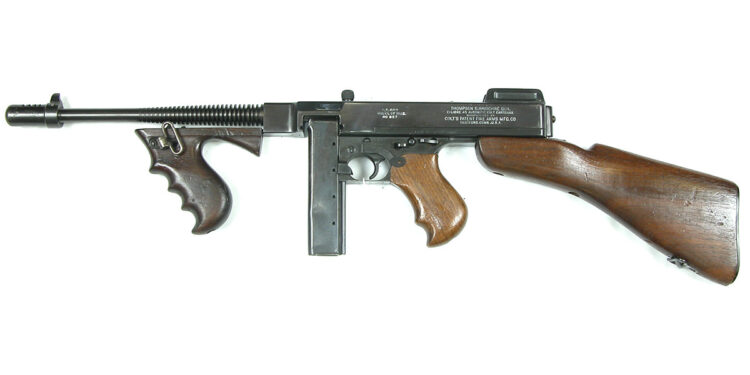By Frank Ianamico
I like to peruse back issues of the old Machine Gun News and Small Arms Review magazines. In a 1992 issue of MGN, a question appeared in one of Dan Shea’s monthly columns; a reader wrote to Dan, “When are machine gun prices coming down?” I thought to myself, I wonder if that person was aware of machine gun prices today?
I looked through the dealer advertisements in the same 1992 MGN issue to see what prices were back then. Well, they were more than before the pre-May 19, 1986, ban on transferable machine guns, but still far, far less than today’s prices. I noted that the average price of a new Colt M16A1 was $2100. I decided to look at prices from the 1970s to the present to see how they have increased over the years, keep in mind inflation over the last 37 years would have some effect on prices.
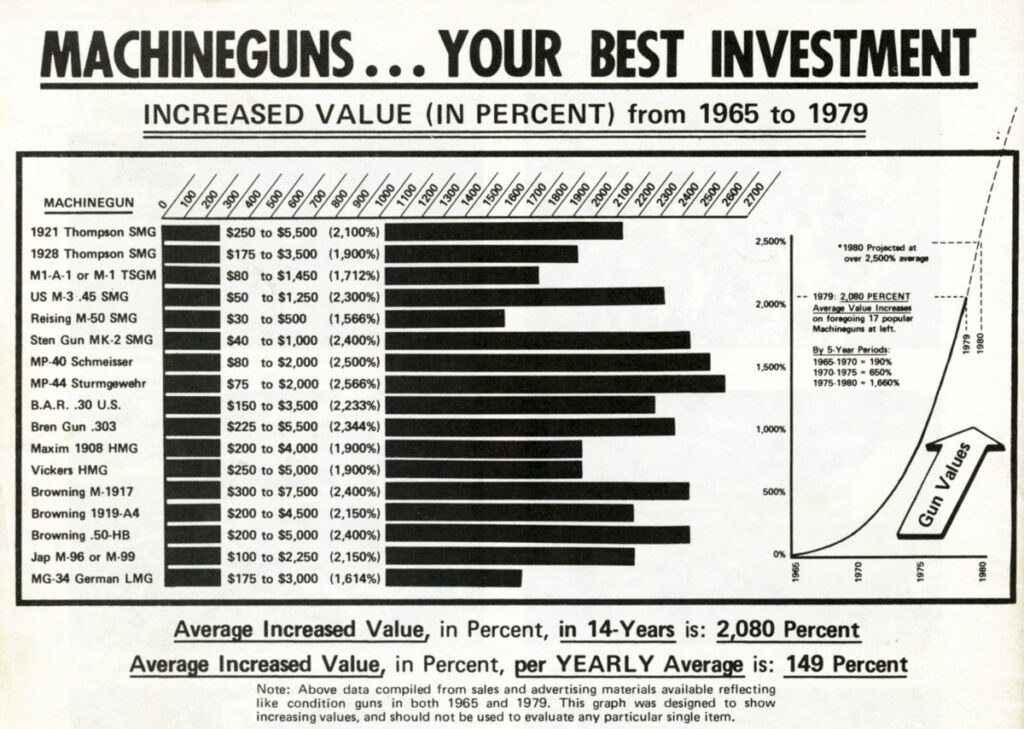
During 1965, Jesse Curtis Earl was one of only three Class III dealers doing business in the United States. Mr. Earl became known (during the pre-internet days) through his magazine advertisements and catalogs. The catalogs were a great source of information on machine gun ownership, a subject of which in those days was pretty much unknown. Photos were available for any gun or item listed at $2.00 for a submachine gun and $5.00 for a belt fed weapon. One recurring statement in his catalogs was the caveat “all sales are final”.
Interestingly, the back page of later catalogs was dedicated to MACHINEGUNS…YOUR BEST INVESTMENT. On the page was a bar graph illustrating the increase in value from 1965 to 1979. According to Mr. Earl, the average increased value per year was 149 percent. He predicted that machine gun prices would continue to increase, stating “Buying machine guns could be the best investment you ever made”. He had no idea how accurate his prediction would prove to be. In his 1986 catalog he listed the price of Colt Model 1921 Thompsons “starting at $3500.00”. Keeping in mind Mr. Earl’s prices could only be described as “astronomical” the average five to six figure selling price of a Colt Thompson today certainly proves his prediction to be accurate. The catalogs were periodically updated and sold until the 1990s. Reportedly, his catalog sales alone provided a good source of income for Mr. Earl.
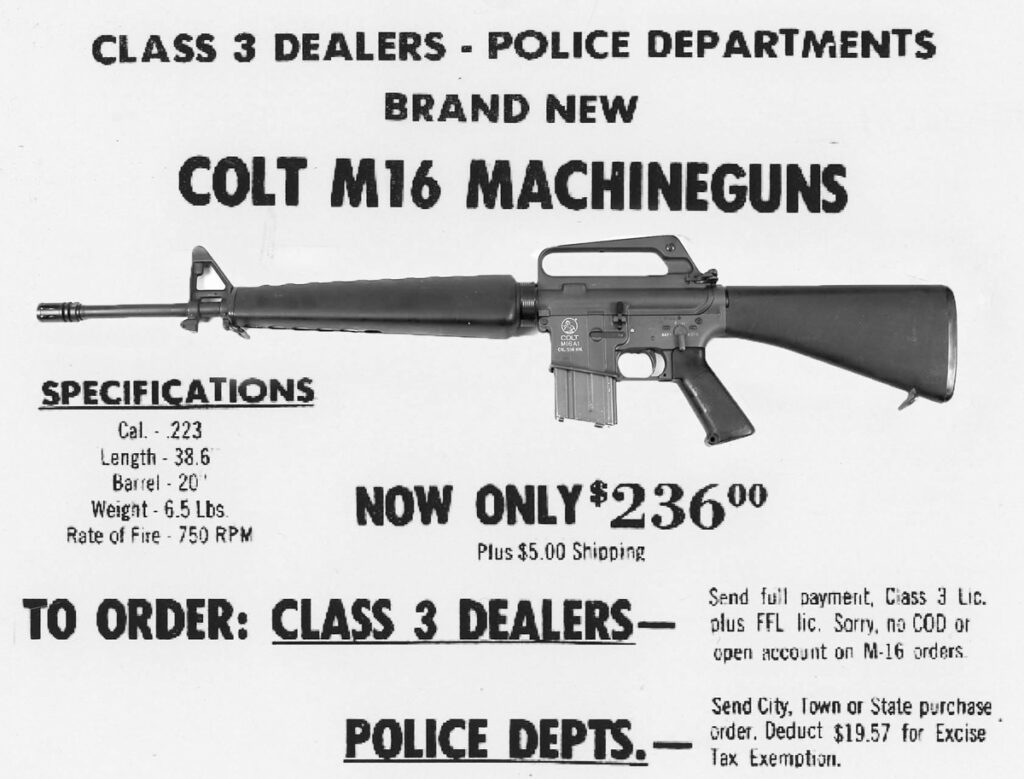
Note that his investment chart was dated seven years before the May 19, 1986, ban on registering transferable machine guns. After the ban, prices doubled overnight. After the initial increase during 1986, machine guns saw modest price increases during the ensuing years. Earl liquidated his machine gun holdings in 1992. Jesse Curtis Earl passed away on 19 July 2000.
The $200 NFA Transfer Tax
One of the reasons machine gun prices increased over the years, prior to the internet, was the required $200 transfer tax. Owners of machine guns interested in selling them wanted to recoup the $200 transfer tax they paid and added it to the price they were asking. For example, Joe paid $500 for his Thompson submachine gun. He got married and decided to sell the gun; Joe is asking $700.00, he sells the Thompson to a dealer. When an individual sells a Form 4 machine gun to a dealer, a $200 tax is still due, so the dealer now has $900.00 invested and to make a profit increases the price to $1100.
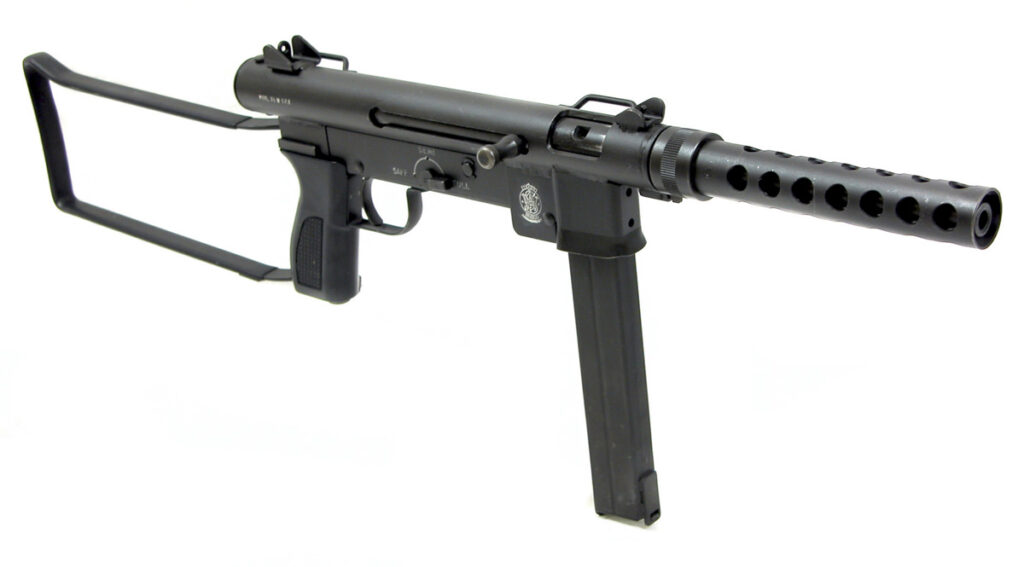
One obstacle to the purchase of a machine gun was the $200 federal transfer tax. Few individuals had sufficient disposable income during the economic recessions of the 1970s and 1980s to pay $500 for an M16A1 rifle and an additional $200 for the transfer tax. Of course, there were many cheaper full-autos available; Sten submachine guns with new manufacture receiver tubes could be had for under $200 retail, and MAC-10s and Smith & Wesson Model 76 submachine guns were available for even less. However, the mindset of many at the time was “I’m not paying a $200 tax on a $100 gun.” Although many, justifiably, complain about the astronomical machine gun prices today, the price is often what motivates the owner to part with a coveted machine gun. When their Colt M16A1 was worth $500 there was no viable reason to sell it. But today, with prices hovering in the range of an average house in 1980, many owners are motivated to sell. According to the Dollar Times, $500 in 1984 had the same buying power as $1,376 in 2022, with annual inflation over this period being 2.70%.
The Internet
The primary reason for astronomical increases in Class III machine gun prices is widespread exposure on the internet. In the “old days” most machine guns being offered for sale were found in the (printed pages) classified ads of the Shotgun News (now known as the Firearm News). There were three issues of SGN a month. Upon arriving in the mail, one usually would turn to the “machine guns for sale” section. When a suitable gun was found, the potential buyer had to CALL the person who placed the ad on a land-line telephone to discuss the deal—email and texting did not yet exist. A plus side to this seemingly (to some) archaic method of communication was that there were far fewer scammers and there was more human contact. Fifty-fifty payment plans were common; 50 percent down started the paperwork; the remaining 50 percent was due when the transfer was approved by ATF, usually within 90 days. Prior to the internet, many in the U.S. believed civilian possession of machine guns was illegal. Others thought that you had to be a Class III dealer. The Class III community was quite small, and many wanted to keep it that way.
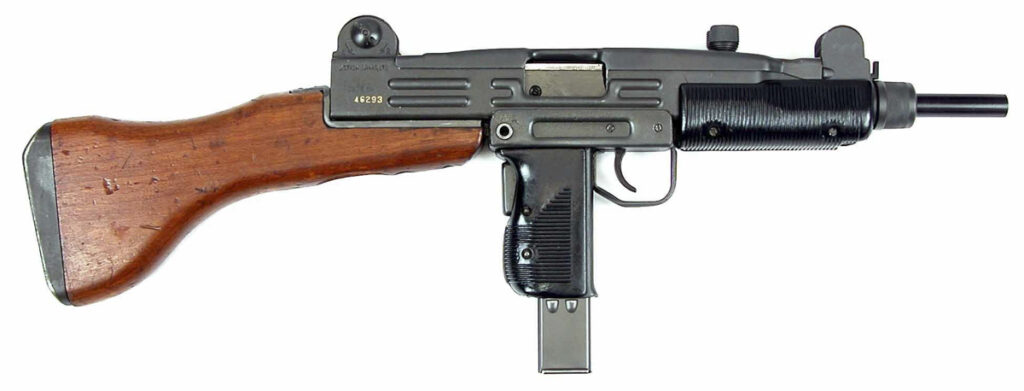
Although all registered machine guns have substantially increased in value over the years, some have increased more than others. Exposure in Hollywood films or TV programs often will have an effect on weapon popularity, and price. World War I era machine guns have not gone up in value as much as more modern guns. Exceptions include the classics, like the Thompson submachine guns manufactured by Colt in 1921. World War II era U.S. issue machine guns like the Grease Guns and WWII era Thompsons remain popular.
Often, guns like the UZI submachine guns, most all converted from semi-automatic versions, have recently had a significant increase in price overnight for no particular reason. Colt M16 rifles and clones remain quite popular.
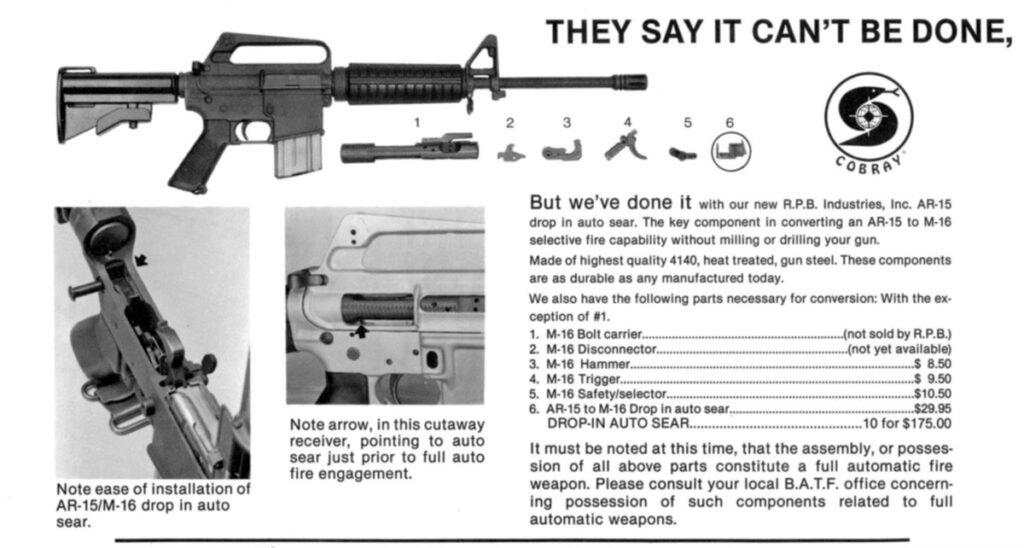
One AR rifle related item that no one could have predicted to have a great increase in value is the drop in autosear (DIAS). The increase is the price of a DIAS has matched, and often increased, in value more than a Colt factory M16A1! Why? Versatility. During the 1980s AR-15 auto sears could be found in the pages of the Shot Gun News for $29. But few people thought to register them, instead most registered their host’s receiver. The value of a registered DIAS is it can be used in any number of AR-type rifles. Years ago, AR-type rifles all looked the same, and few people owned more than one, that has changed. Since the rights to the AR-15 expired, the market has been flooded with AR and M16 clones, most in updated modern configurations. HK registered sears and sear packs have had a similar price increase. The value of a HK sear versus a registered receiver is, again, versatility. A registered HK sear can be used in different HK and clone models and calibers.
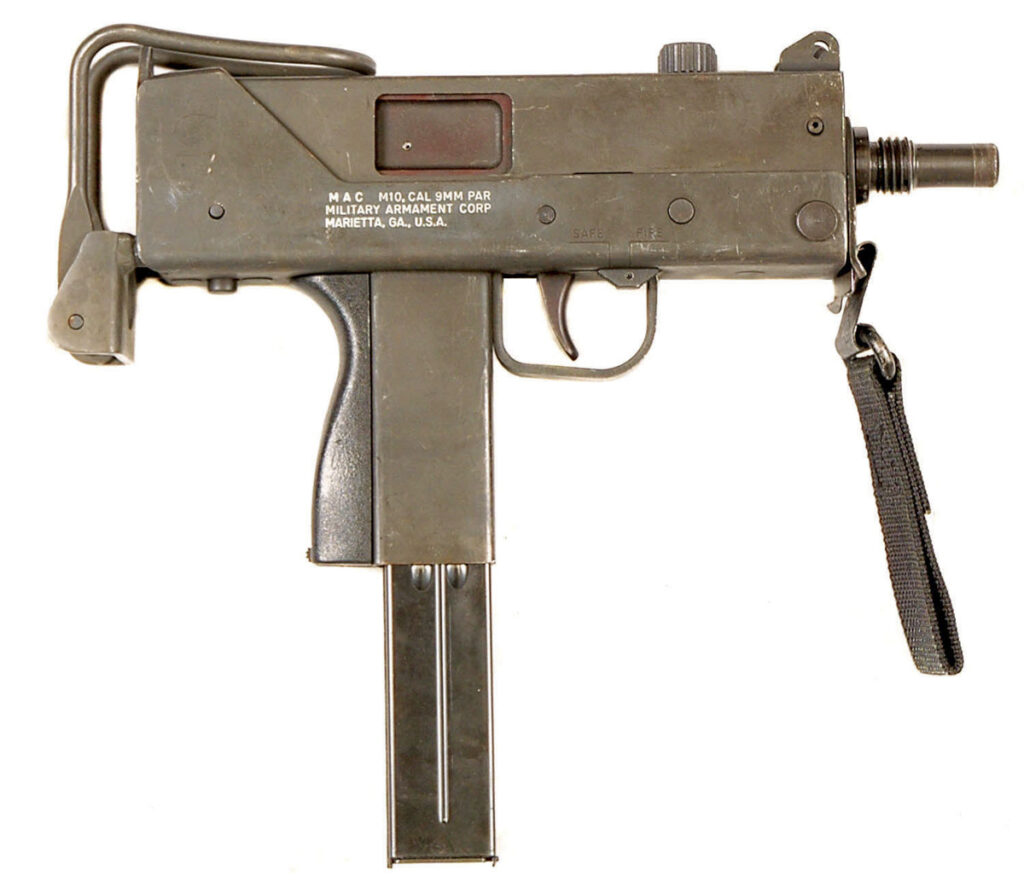
Another 1970s era subgun that few would ever consider as nothing more than a bullet hose, are the MAC 10, MAC 11, and SWD’s M11/Nine submachine guns. Most of these guns could be bought new in the 1980s for less than $200. Today, they can demand a price in the low five-figure range. Why? Primarily by the efforts of one company, Lage Manufacturing LLC. Lage sells upper receiver conversions that slow down the rate of fire and make the guns more ergonomic. A more recent development by Lage is an upper receiver that converts the little submachine guns to fire .223/5.56 ammunition.
Where will the machine gun price increases end? We all ask, “how much higher could they possibly go?” Think back when M16 rifles were less than $500, did anyone back then could ever imagine that prices would be where they are today? History has proven that the prices you balk at today, you will be happy to pay next year!
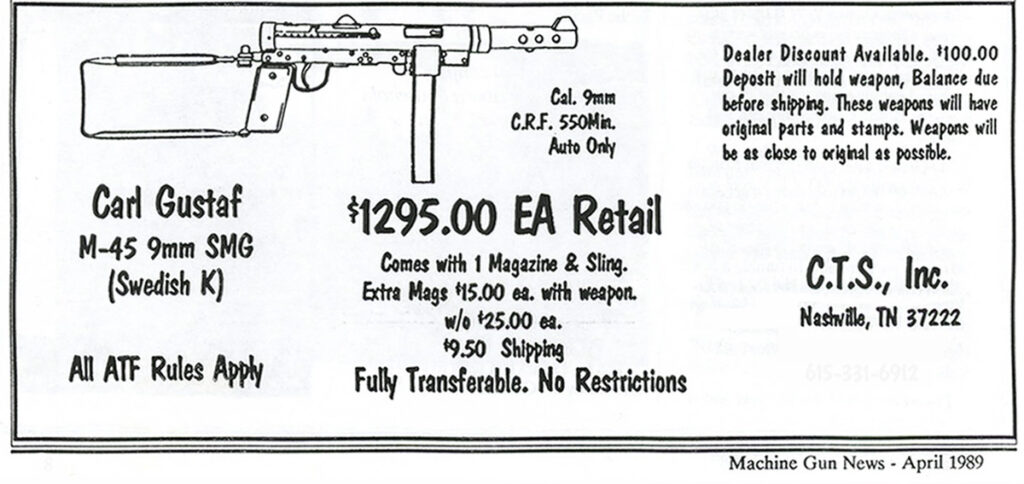
Developments in the firearms industry, movies, the internet, auctions, along with an increasing demand with a finite supply, have all contributed to the prices of machine guns today, in a way no one could have ever predicted, not even Curtis Earl.



